

7/2006

Becoming an Architect, by Lee Waldrep, PhD, associate dean of the University of Maryland’s school of architecture (John Wiley & Sons Inc., 2006) features complete coverage of the three central components of becoming an architect: education, experience, and exam. Waldrep guides the reader through the major hurdles of graduating with an accredited professional degree in architecture, gaining experience through an internship, and passing the Architect Registration Examination. The book offers dozens of in-depth interviews and career profiles with practicing architects, as well as succinct answers to questions, such as “What do you look for in hiring a new designer?”
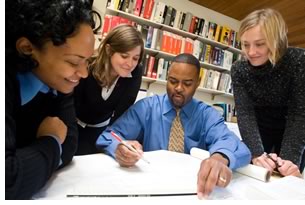 I
look for passion and problem-solving ability.—Carol
Ross Barney, FAIA, Principal, Ross Barney + Jankowski Inc.
I
look for passion and problem-solving ability.—Carol
Ross Barney, FAIA, Principal, Ross Barney + Jankowski Inc.
I look for an excellent listener who has experience designing and planning buildings for the environment I work in.—H. Alan Brangman, AIA, university architect, Georgetown University.
Our firm looks for graduate architects who have an inspiring portfolio, solid experience, and excellent references. We want to see an interest in the urban scale and the project types on which we thrive—large, complex, and important. We want to meet an engaging professional who can become part of our culture of creativity, collaboration, and communication.—Diane Blair Black, AIA, vice president, RTKL Associates Inc.
For me, all professional staff members must be designers. Therefore, all must be able to work together in a constructive and positive manner. Because of the size of my office and my inability to meet with everyone every day, all designers must be self-motivated and confident in making decisions and communicating with clients, contractors, public agencies, and suppliers. They should also know what they do not know—that is, they must know when to ask questions, do research, or seek an answer. Finally, designers must think creatively, responsibly, and with vision.—Clark Llewellyn, AIA, director, Montana State University.
 I look for incredible talent and ambition.—William
Carpenter, PhD, FAIA, associate professor, Southern Polytechnic State
University and president, Lightroom.
I look for incredible talent and ambition.—William
Carpenter, PhD, FAIA, associate professor, Southern Polytechnic State
University and president, Lightroom.
First, and foremost, I look for people who think like an architect—that is, can solve problems architecturally. By this I mean they can look for unexpected solutions and solve them poetically. Many pragmatic concerns must be resolved in the design of a building. In addition, I look for a good work ethic, good people skills, commitment to excellence in architecture, creative problem solving capabilities, and the potential to develop technical skills.—Edward Shannon, AIA, assistant profession, Judson College.
A designer’s communication skills—the ability to listen, speak, write, and represent ideas—provide insights into how well he or she can function within a professional practice. The last, representing ideas, is what distinguishes architects from others. In the final analysis, architecture is our ability to turn ideas into representations. Whether the representation is in the form of a diagram, sketch, rendering, or physical or digital model, the architect’s ability to represent precedes the construction of reality. A young designer who impressed me the most and became a leader in our firm was expert at taking notes at meetings. This rapid method of communicating design ideas made him valuable as a designer and leader in our firm.—Robert M. Beckley, FAIA, professor and dean emeritus, University of Michigan.
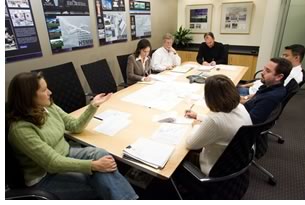 Basic
intelligence and a willingness to learn are all aspects of the craft.
Can the individual logically explain his or her work? I look for people
for whom I can be an effective teacher and mentor and who will be engaging
students. I also look to build a team rather than hire a lone talent.
Chemistry is always an important ingredient of accomplishment.—Richard
A. Eribes, PhD, AIA, professor and dean emeritus, University of Arizona
College of Architecture, Planning, and Landscape Architecture.
Basic
intelligence and a willingness to learn are all aspects of the craft.
Can the individual logically explain his or her work? I look for people
for whom I can be an effective teacher and mentor and who will be engaging
students. I also look to build a team rather than hire a lone talent.
Chemistry is always an important ingredient of accomplishment.—Richard
A. Eribes, PhD, AIA, professor and dean emeritus, University of Arizona
College of Architecture, Planning, and Landscape Architecture.
The best first impression is made with a good, well-organized, and well-presented portfolio that exhibits creative work. Next, we see communication in all of its forms, including graphic images and verbal skills. In addition, we look for good work habits, strong character, and people skills, including the ability to work with others and with clients.—Jack Kremers, AIA, professor, Judsen College.
I look for people who communicate well, think broadly and deeply, display freehand drawing skills, and have a true passion for being an architect.—Gaines Hall, FAIA, vice president, Kirkegaard & Associates.
From a practical perspective, I look for someone who cares, who is interested in the world around him or her—someone who is aware and sensitive, who listens and asks questions, who moves forward with initiative even if backtracking is necessary to get it right. I look for someone who tunes into people, places, and things. From a philosophical perspective, a portfolio is not enough. I want people who speak of places they have visited that moved them in some way, and why. I want to know of specific life experiences that have shaped them personally and informed their design work.—Barbara Crisp, principal, Underwood + Crisp.
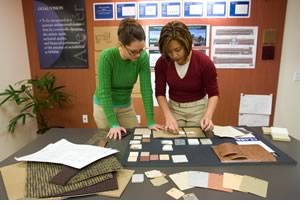 I look for self-confidence, preparation, and a sense of humor. I look
for people who know their strengths and weaknesses. I look for people
who can be themselves.—F. Michael Ayles,
AIA, director of operations, Antinozzi Associates.
I look for self-confidence, preparation, and a sense of humor. I look
for people who know their strengths and weaknesses. I look for people
who can be themselves.—F. Michael Ayles,
AIA, director of operations, Antinozzi Associates.
I look for a candidate who is different from the rest of my team—someone who will offer an aspect of the profession we do not have. I look for a candidate who has the basic skills but will also help us question the future from a different perspective. The best team is a diverse and collaborative team.—Roy Abernathy, AIA, president, Jova/Daniels/Busby.
Because young practitioners often have a considerable wealth of knowledge in technology that can be useful to the development of a practice, I recruit individuals with expertise in a range of digital tools who also have excellent visual, oral, and written communication skills because they add value to the firm.—Kathryn T. Prigmore, FAIA, project manager, HDR Architecture Inc.
I look for people who can communicate graphically with their hand and a pen. They must be able to analyze problems and have a natural curiosity to find solutions. I want people who are self-motivated and not intimidated by risk. They also must enjoy people, because we work as teams with our consultants or as a design and construction team.—Katherine S. Proctor, AIA, director of facilities, Jewelry Television.
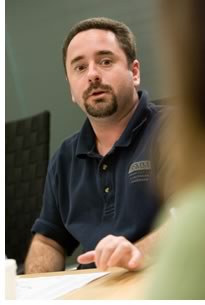 First, I look for the ability to conceptualize a problem, and second
(immediately after the first), the ability to translate concepts into
the physical world in the form of space, object, detail, etc.—Doug
Garofalo, FAIA, professor, University of Illinois at Chicago, and president,
Garofalo Associates.
First, I look for the ability to conceptualize a problem, and second
(immediately after the first), the ability to translate concepts into
the physical world in the form of space, object, detail, etc.—Doug
Garofalo, FAIA, professor, University of Illinois at Chicago, and president,
Garofalo Associates.
In interns, including those just out of school, we look for strong hand drawing and sketching skills, strong computer aptitude, a spark of design inspiration and understanding in the portfolio, and an eager enthusiasm and openness to a variety of experiences. The ability to solve design problems through sketching solutions in real time with the client is a key differentiation in our services. Also, critically, our designers must have an aptitude for and a willingness to use a computer.—Carolyn Jones, AIA, associate principal, Callison Architecture Inc.
I generally look for skills not represented in a portfolio. We focus on evidence of basic technical capabilities and skill sets. I emphasize the basics, especially for entry level staff, because we know people need time to develop more advanced skills. If someone has strong basic skills, we can add to and develop them over time. I look for people who can learn and are willing to take on new challenges. Communication skills are also vitally important, including writing, speaking, sketching, drawing, and listening. Professional attitude, appearance, evidence of loyalty, and dedication also make a strong impression on me. I have always said that I can train for a lack of technical skills but I cannot correct character flaws of disloyalty, indifference, laziness, or untrustworthiness.—Randall J. Tharp, senior vice president, A. Epstein and Sons International Inc.
I look for passion and commitment to the profession when I interview young graduates. Their portfolios provide insight into their underlying talent, which is an essential ingredient, but architecture requires tenacity and perseverance, which can be just as important.—W. Stephen Saunders, AIA, principal, Eckenhoff Saunders Architects Inc.
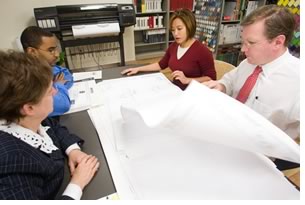 I look for communications skills, both verbal and graphic. I look for
confidence, a broad range of skills, and team spirit. I look for evidence
of volunteerism.—Grace Kim, AIA, principal,
Schemata Workshop Inc.
I look for communications skills, both verbal and graphic. I look for
confidence, a broad range of skills, and team spirit. I look for evidence
of volunteerism.—Grace Kim, AIA, principal,
Schemata Workshop Inc.
We do not hire talent or seek out conscious individuals and nurture their talents. Instead, in our practice, we seek out designers who are committed and passionate about becoming fully conscious of their world, humanity, and themselves rather than individuals who possess only narrowly disciplined knowledge and skills. We nurture and develop designers who are alert, curious, questioning of what they see, willing to collaborate, risk takers, and willing to provoke change within us.—Max Underwood, AIA, professor, Arizona State University, and architect/principal, Underwood + Crisp
I look for great optimism. Most important, I look for people who are inquisitive and appear to possess a quest for analyzing, theorizing, and implementing their ideas regardless of obstacles or barriers—Patricia Saldana Natke, AIA, principal and president, Urban Works Ltd.
I look for a strong portfolio of work.—Thomas Fowler IV, associate professor and associate head, California Polytechnic State University—San Luis Obispo.
Copyright 2006 John Wiley & Sons. Excerpted with permission.
Copyright 2006 The American Institute of Architects.
All rights reserved. Home Page ![]()
![]()
Becoming an Architect also features a foreword by AIA President Kate Schwennsen. She writes, “This book recognizes the breadth and depth of architect's responsibilities and possibilities. It recognizes that architects' are uniquely placed by virtue of their education and experience to understand and mitigate the complex predicaments of the twenty-first century. This book is a fundamental beginning to a life of accomplishment as an architect.”
Becoming an Architect is available from the AIA Store. The book lists for $35; AIA members may purchase it for $31.50. Order online or phone 800-242-3837, option #4.
![]()